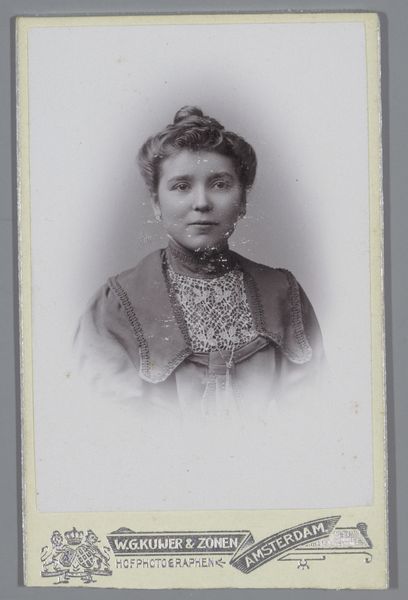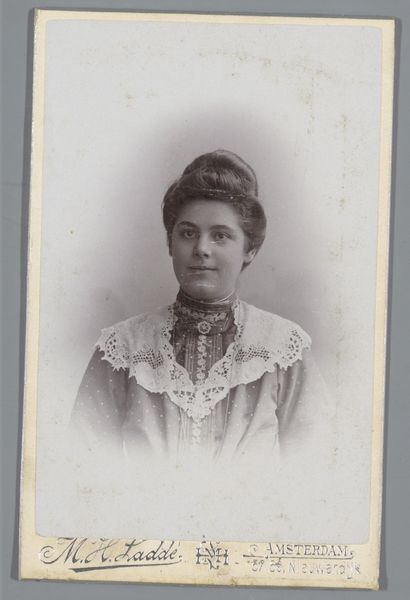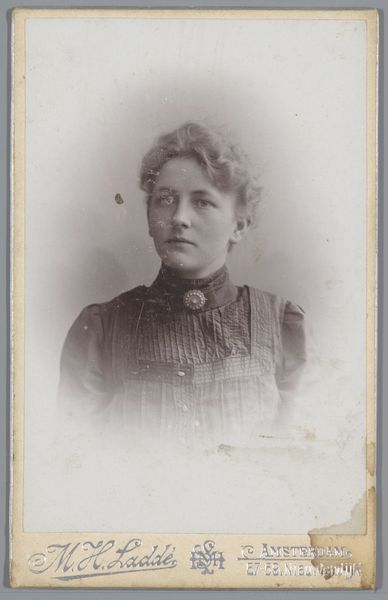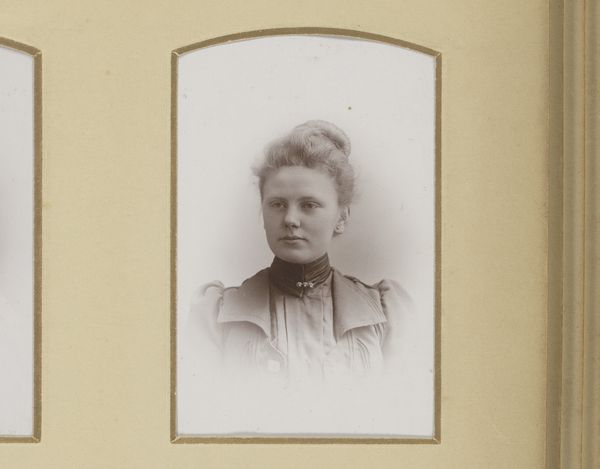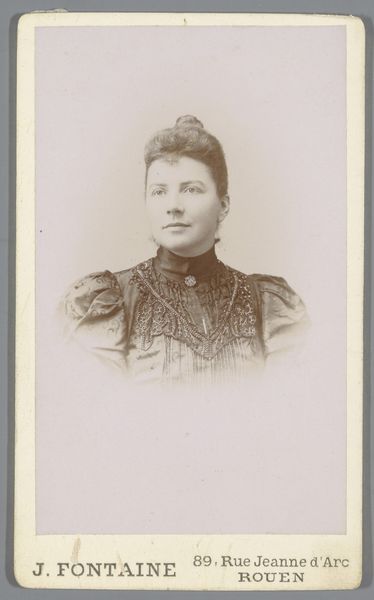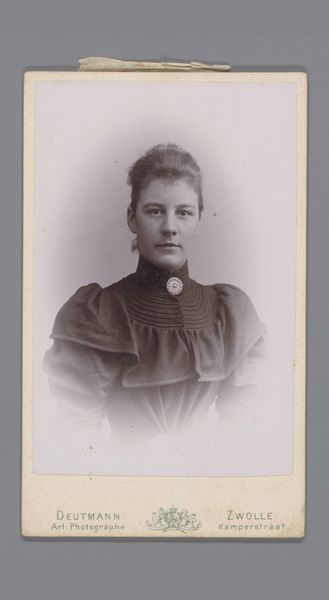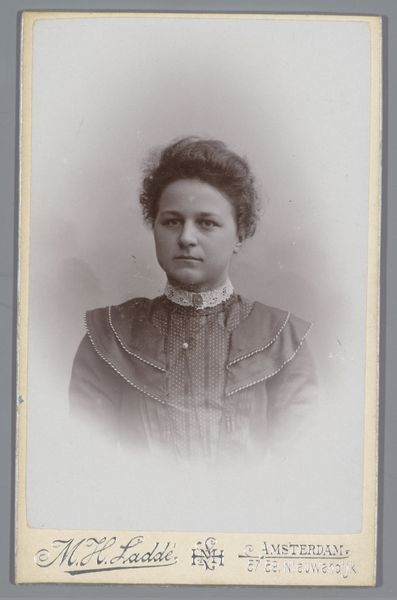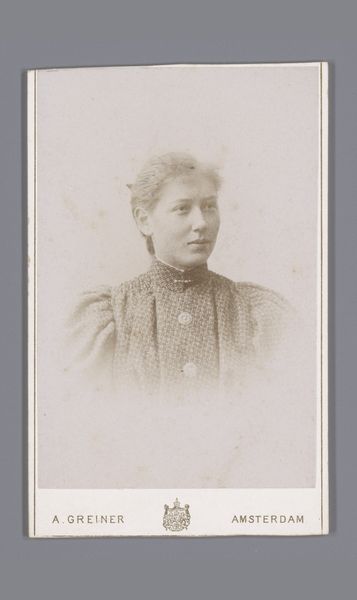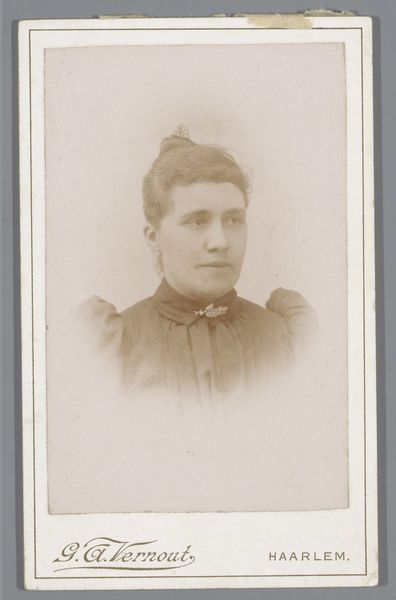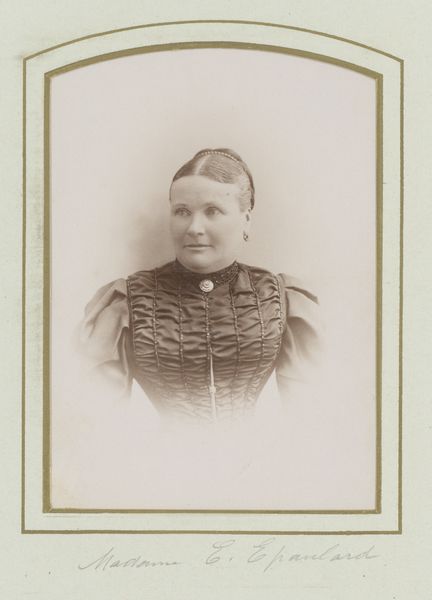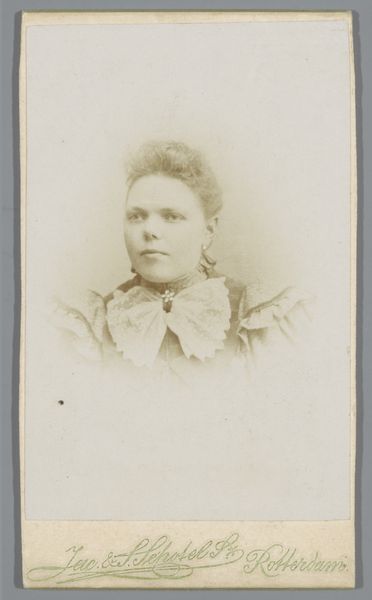
photography
#
portrait
#
photography
#
realism
Dimensions: height 104 mm, width 65 mm
Copyright: Rijks Museum: Open Domain
Curator: This photographic portrait, known as "Portret van een onbekende vrouw," produced by W.G. Kuijer & Zonen between 1880 and 1906, presents an intriguing study in realism. Editor: My immediate impression is one of serenity tinged with a hint of melancholy. The soft light and muted tones create a gentle, almost ethereal atmosphere. Curator: Notice how the composition isolates the subject, framing her face within the oval vignette. The restrained tonal range, almost monochromatic, draws focus to the subtle modulations of light and shadow. Editor: Indeed. The oval frame is a window onto another era. It draws my eye to her simple but refined dress. That decorative brooch or clasp at her collar evokes a sense of Victorian-era modesty. The choice of attire, rather than jewels or overt finery, tells me much about the values of this era and how a woman wished to present herself to society. Curator: Precisely. The surface of the photograph itself adds another layer, bearing subtle marks and imperfections of age that reveal its materiality as a crafted object. This materiality is significant in understanding its presence not merely as representation, but as art. Editor: I'm also drawn to the gaze—direct yet gentle. It conveys both a sense of composure and a vulnerable openness. What stories does she hold within her, and what dreams might she have harbored? Those symbols and expressions resonate through the years and across cultures. It bridges the gap of time, fostering connection. Curator: Certainly, that direct gaze encourages the viewer's gaze, and invites questions of presence. It transforms the artwork into something far more active than passive looking might suggest. It requires and achieves visual engagement with viewers across centuries. Editor: It's remarkable how much a single image, frozen in time, can still evoke echoes of a bygone world. Through careful choices in posture, clothing, and expression, symbols and meaning become timeless—allowing viewers from different eras to appreciate the richness and continuity of human experience. Curator: Absolutely. Through the photograph's visual language, structure, and historical setting, viewers perceive not just a static image but a living entity constantly reframed. Editor: I'm moved by its profound, symbolic and accessible glimpse into history, reminding us that within the visual tapestry of time, individuals live, dream, and persevere—even after a century.
Comments
No comments
Be the first to comment and join the conversation on the ultimate creative platform.
